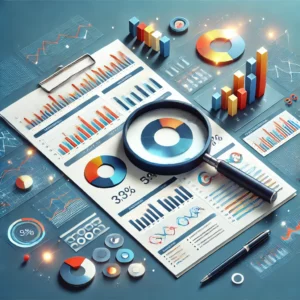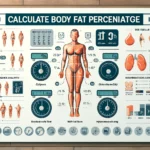Percentages play a crucial role in our daily lives. Whether you are calculating discounts, understanding interest rates, or analyzing data, a solid grasp of percentages is essential. This beginner’s guide will walk you through the concept of percentages, their calculations, and their applications in various fields.
What is a Percentage?
A percentage is a way of expressing a number as a fraction of 100. The word “percentage” comes from the Latin “per centum,” meaning “by the hundred.” It is represented using the symbol “%” and is used to compare proportions, express probabilities, and more.
For example, if a student scores 80 out of 100 on a test, their score can be expressed as 80%.
Basic Formula for Calculating Percentages
The fundamental formula for calculating a percentage is:
Percentage = (Part / Whole) × 100
Example 1: Converting a Fraction to a Percentage
If you ate 3 out of 5 slices of a pizza, the percentage of pizza you ate is:
(3 / 5) × 100 = 60%
Example 2: Converting a Decimal to a Percentage
To convert 0.75 to a percentage, multiply by 100:
0.75 × 100 = 75%
Example 3: Finding the Percentage of a Number
If you want to find 20% of 150:
(20 / 100) × 150 = 30
Thus, 20% of 150 is 30.
Common Applications of Percentages
1. Finance and Banking

Percentages are a fundamental part of finance and banking, where they are used to calculate interest rates, loan repayments, savings, and investment returns. Banks offer savings accounts with interest rates expressed as percentages. For example, if a savings account offers a 5% annual interest rate, it means that for every $100 deposited, $5 will be earned in interest per year.
Loan interest rates are also given in percentages. A home loan with a 3.5% annual interest rate means the borrower must pay an additional 3.5% of the borrowed amount as interest over the year. Compound interest, which calculates interest on both the principal and previously earned interest, is another crucial financial concept based on percentages.
Stock market growth and declines are represented in percentages. If a stock price increases from $100 to $120, it has grown by 20%. Similarly, inflation rates are expressed in percentages, indicating how much the general price level of goods and services rises over time.
2. Shopping and Discounts

Retail stores use percentages to attract customers with discounts and promotional offers. For example, a 30% discount on a $200 item means a customer saves $60, reducing the price to $140. Many stores also offer bulk purchase discounts or seasonal sales, where percentage-based reductions make a significant impact on pricing.
Taxes on goods and services are also calculated as a percentage of the total cost. For instance, if a product is priced at $50 and has a sales tax of 8%, the customer pays an additional $4 in tax, making the total price $54. Similarly, tipping at restaurants is commonly calculated as a percentage of the bill, often ranging from 10% to 20%.
3. Statistics and Data Analysis

Percentages are extensively used in statistics and data analysis to interpret survey results, research findings, and business metrics. When analyzing survey data, percentages help in understanding trends and public opinions. For example, if 75% of people surveyed prefer a particular brand, it indicates a strong market preference.
In business, companies use percentages to track revenue growth, profit margins, and customer satisfaction rates. A business with a 10% increase in annual revenue shows financial growth, while an 85% customer satisfaction rate suggests a high level of approval. Governments also use percentages to report unemployment rates, voter turnout, and economic growth figures.
4. Health and Fitness

In health and fitness, percentages are essential for tracking body composition, nutritional intake, and medical statistics. Body fat percentage is an important health indicator, helping individuals determine whether they are underweight, healthy, or overweight. For instance, a body fat percentage of 15% is considered lean, while anything above 25% may indicate obesity.
Nutritional labels on food products list macronutrient compositions as percentages. For example, a nutrition label may state that a serving of food provides 10% of the daily recommended intake of fiber. Similarly, daily calorie intake is often managed using percentage-based guidelines, such as consuming 50% of daily calories from carbohydrates, 30% from fats, and 20% from proteins.
Medical statistics, such as the effectiveness of treatments and vaccination rates, are expressed in percentages. A vaccine with a 95% efficacy rate means it effectively prevents disease in 95 out of 100 vaccinated individuals.
5. Education and Exams

Educational institutions use percentages to assess student performance, report grades, and compare academic results. Exam scores are usually presented as percentages, making it easier to gauge a student’s proficiency. For instance, a student scoring 85% on a test demonstrates a strong grasp of the subject matter.
Attendance records are also kept in percentages. A student with a 90% attendance rate means they attended 90 out of 100 school days. Scholarship eligibility and academic honors are often awarded based on percentage-based grading systems.
Furthermore, universities and standardized tests use percentile rankings to compare students’ performances with their peers. A student scoring in the 90th percentile on a college entrance exam performed better than 90% of other test-takers.
Percentage Increase and Decrease
Percentage Increase Formula:
Percentage Increase = [(New Value – Original Value) / Original Value] × 100
Example:
If a stock price increases from $50 to $65:
[(65 – 50) / 50] × 100 = (15 / 50) × 100 = 30%
The stock price increased by 30%.
Percentage Decrease Formula:
Percentage Decrease = [(Original Value – New Value) / Original Value] × 100
Example:
If a product price drops from $80 to $60:
[(80 – 60) / 80] × 100 = (20 / 80) × 100 = 25%
The price decreased by 25%.
Converting Between Percentages, Fractions, and Decimals
Converting a Percentage to a Fraction
To convert 25% to a fraction:
25% = 25/100 = 1/4
Converting a Percentage to a Decimal
To convert 40% to a decimal:
40% = 40/100 = 0.4
Converting a Fraction to a Percentage
To convert 3/8 to a percentage:
(3 ÷ 8) × 100 = 37.5%
Tips and Tricks for Working with Percentages
- Memorize Common Percentages: Knowing that 50% is half and 25% is one-fourth helps in quick mental calculations.
- Use Approximation: If you need a quick estimate, rounding the percentage to the nearest easy-to-calculate number can help.
- Practice with Real-Life Examples: Calculate tips at restaurants, discounts while shopping, and interest on savings accounts to improve your skills.
- Use Percentage Charts: Having a reference chart for common percentages can be helpful.
Conclusion
Understanding percentages is essential for everyday activities, from shopping to managing finances. By mastering percentage calculations and their applications, you can make more informed decisions and improve numerical literacy. With practice, working with percentages will become second nature.
Now that you have a strong foundation, try solving real-life percentage problems to strengthen your understanding!


